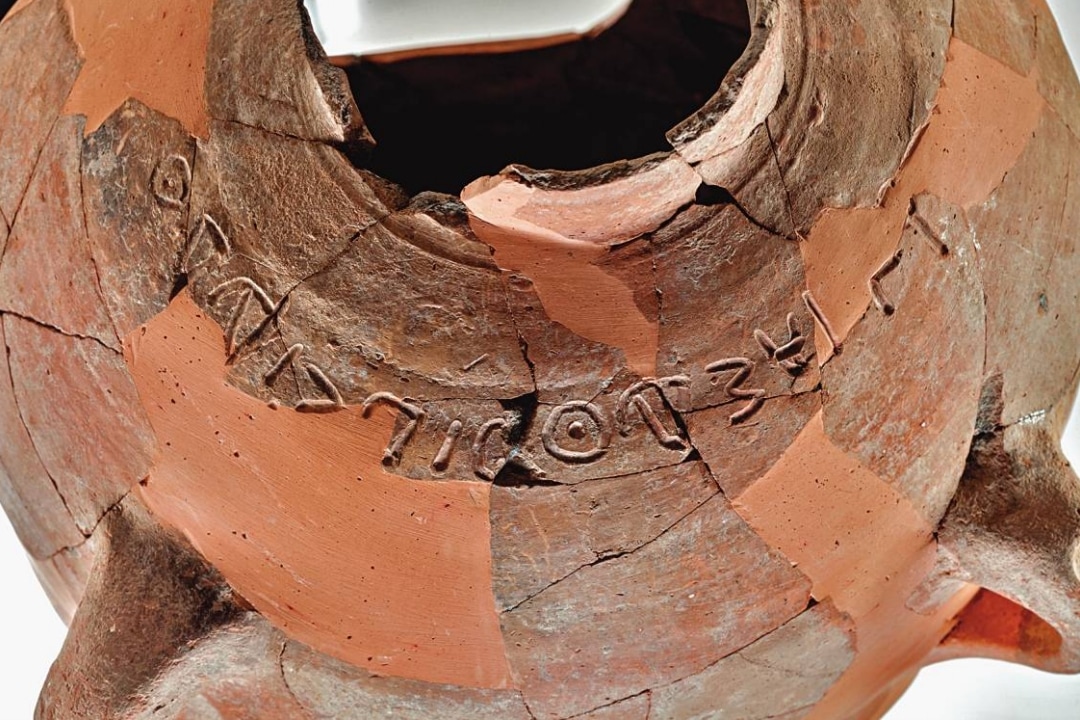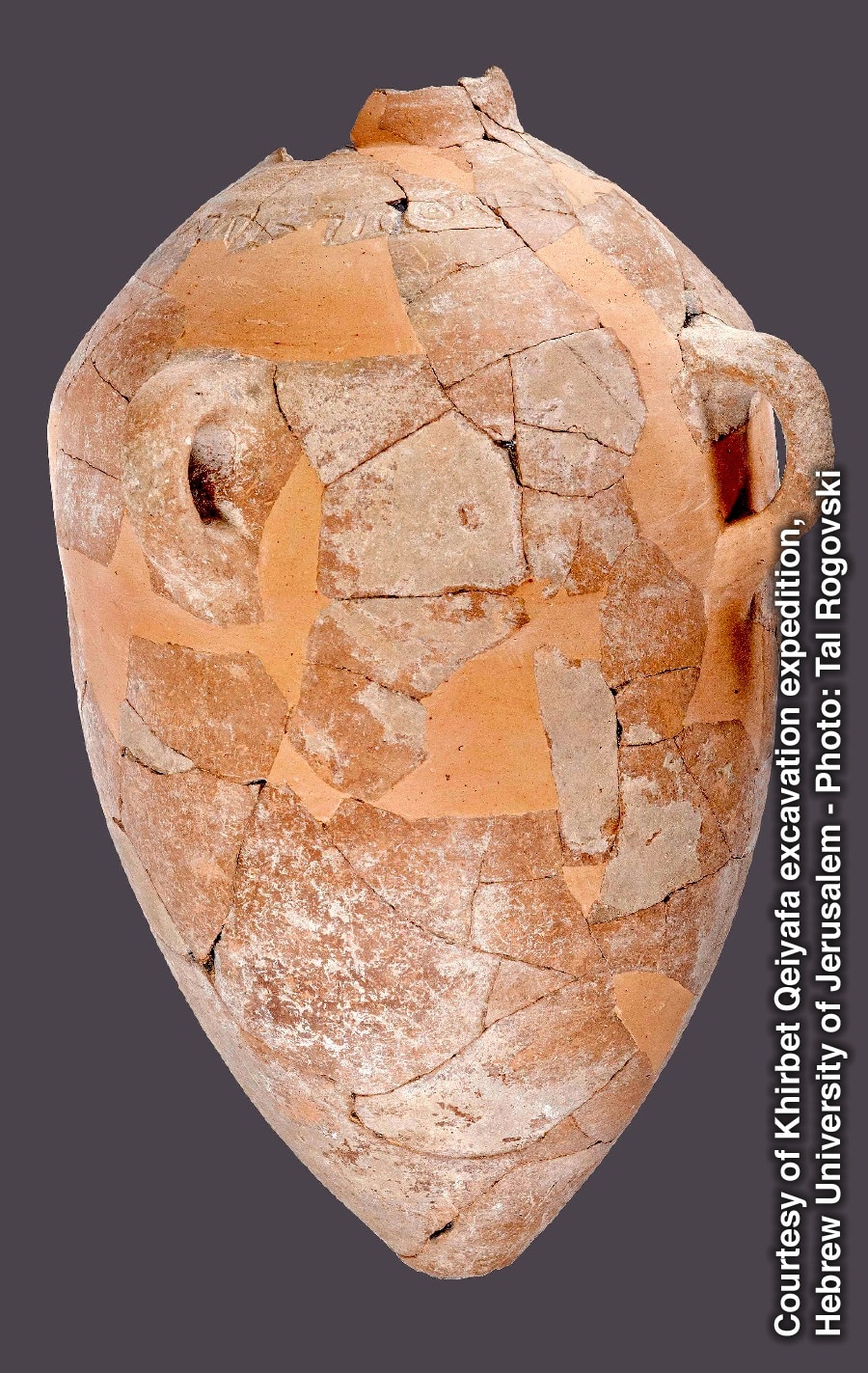The ʾIšbaʿal Inscription from Khirbet Qeiyafa
|
A new West Semitic inscription from Khirbet Qeiyafa is presented. It was incised in Canaanite alphabetic script on a pottery storage jar before firing. Radiometric dating of the relevant layer has yielded a date of ca. 1020–980 b.c.e. The last few years have seen the publication of several new Semitic alphabetic inscriptions dated to the late 11th–10th centuries b.c.e. and originating at controlled excavations in Israel (Khirbet Qeiyafa, Beth Shemesh, Tell eṣ-Ṣâfi, and Jerusalem). The
new inscription is an important addition to this corpus. More information in the file below: |
| garfinkel_et_al_2015_isbaal_inscription_basor_373.pdf |
A Bible Name on an Ancient Jar
|
The shards of a 3,000-year-old ceramic jar unearthed in 2012 recently stirred the interest of researchers. What was so special about this find? It was not the fragments in themselves but what was written on them.
When archaeologists were finally able to piece the artifact together, they could decipher the ancient Canaanite script. It read: “Eshba’al Ben [son of] Beda’.” This is the first time that archaeologists have found this name in an ancient inscription. Actually, another Eshbaal is mentioned in the Bible—he was one of the sons of King Saul. (1 Chron. 8:33; 9:39) Professor Yosef Garfinkel, who participated in the excavation, observes: “It is interesting to note that the name Eshba’al appears in the Bible, and now also in the archaeological record, only during the reign of King David.” Some think that it was a name unique to that specific time period. Once again, a detail in the Bible has been borne out by archaeological evidence. Elsewhere in the Bible, the name Eshbaal is presented as Ish-bosheth, “baal” being replaced with “bosheth.” (2 Sam. 2:10) Why? “In II Samuel there was apparently reluctance to use the name Eshba’al, which was reminiscent of the Canaanite storm god Ba’al,” explain researchers, “but the original name . . . was preserved in the Book of Chronicles.ʺ Source: https://www.jw.org/en/publications/magazines/watchtower-study-march-2017/a-bible-name-on-an-ancient-jar/ |


